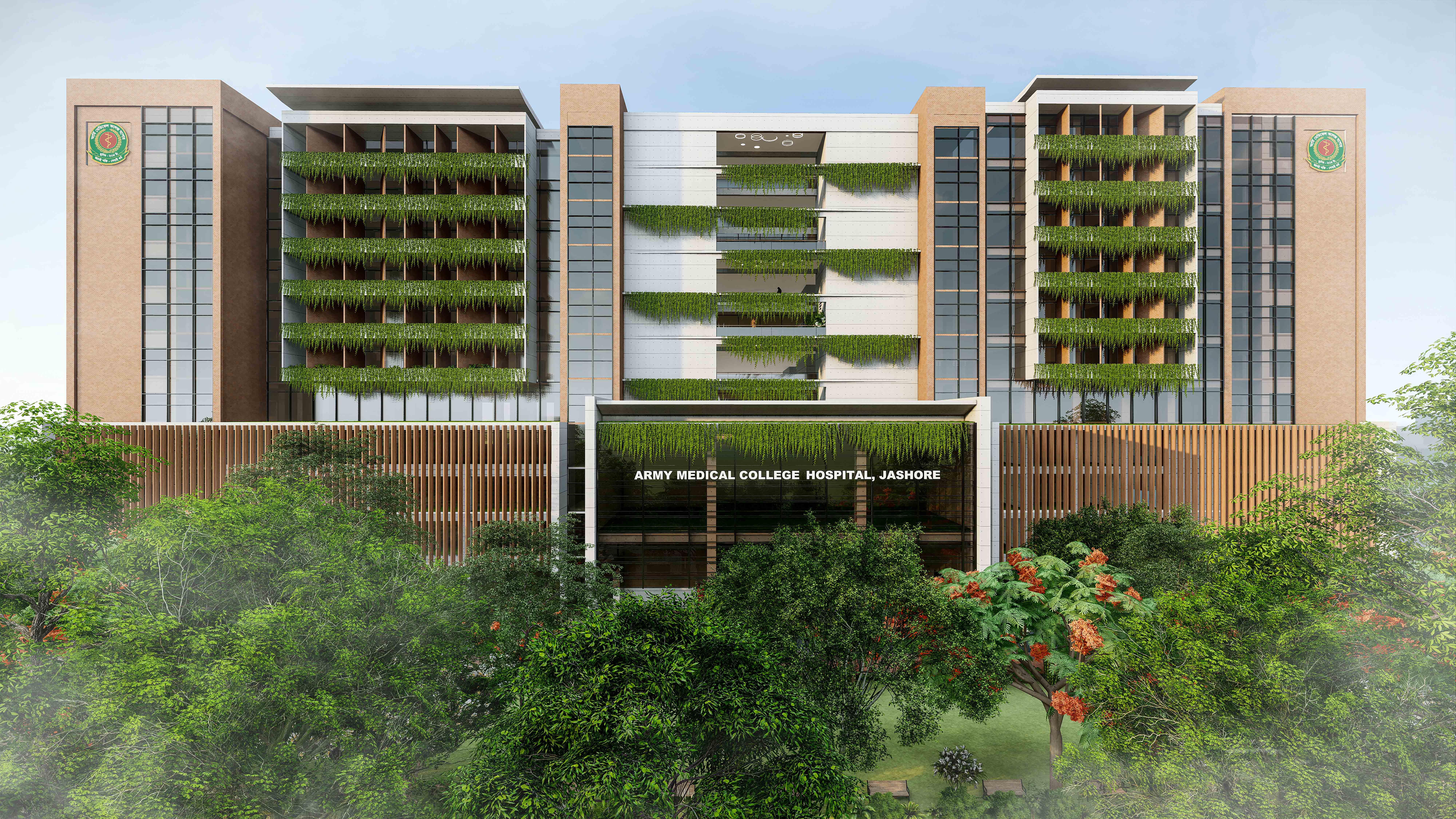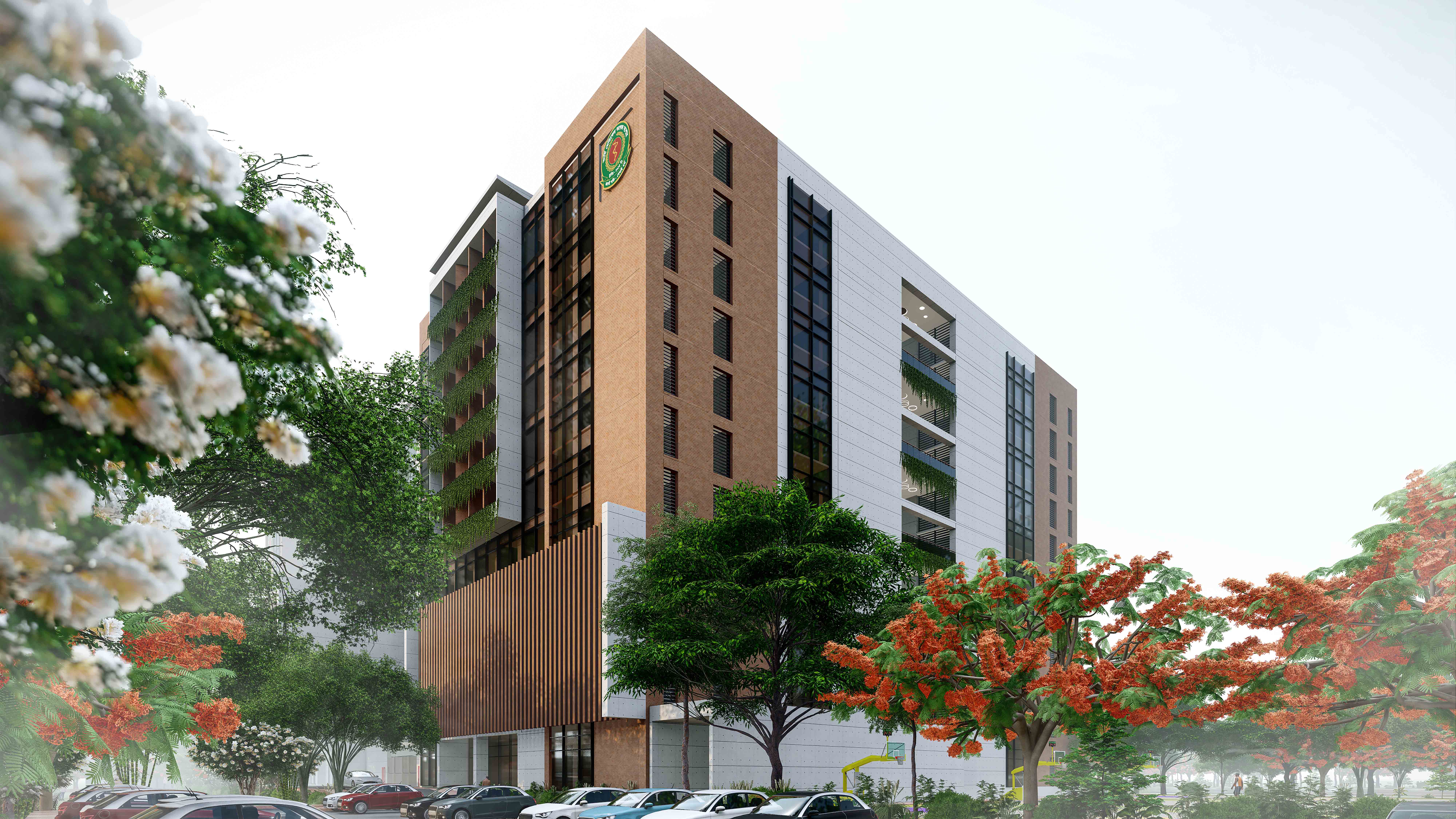Located within the disciplined fabric of Jashore Cantonment, the Army Medical College Hospital stands as both a healthcare hub and a teaching facility. With a capacity of 500 beds across a 21,000 sq ft site, the project responds to the dual demands of military discipline and public healthcare, creating an environment that is secure, sustainable, and community-integrated. Its adjacency to the Army Medical College and dormitories positions it as a nexus of treatment, education, and resilience.

The design is anchored in the concept of a “Healing Ecosystem”—an architecture that extends care beyond medical treatment and into the realm of nature, ecology, and sensory experience. Rooted in local context, the hospital embraces brick, concrete, glass, and steel, balancing permanence with permeability. Double-height terraces, shaded verandas, and carefully oriented louvres allow daylight, cross-ventilation, and energy efficiency to define the spatial experience.

Nature is not peripheral here—it is integral. Vertical gardens are planted with therapeutic species such as mint, aloe vera, jasmine, and lavender, chosen for their fragrance, texture, and color to aid recovery. Green terraces reduce ambient temperature and purify the air, while shaded courtyards and landscaped water edges echo the agrarian character of Jashore, offering restorative spaces for patients and visitors alike. Birds, bamboo, and seasonal flowering trees infuse the grounds with sound, movement, and life—turning the hospital into a living landscape.

Programmatically, the hospital is layered for clarity and function: basement services and radiology; emergency and public access on the ground; laboratories and seminar spaces on the first floor; OPD on the second; and wards from the fourth to tenth floors, each with green verandas that provide constant contact with nature. A dedicated mechanical floor ensures seamless integration of building services without compromising usability.

Sustainability underpins the design. Rainwater harvesting supports irrigation of the gardens, indoor planting improves air quality, and energy-efficient lighting reduces the building’s ecological footprint. More than a medical institution, the hospital becomes a biophilic landmark—where ecology, architecture, and culture converge to create an atmosphere of care, healing, and resilience.






















